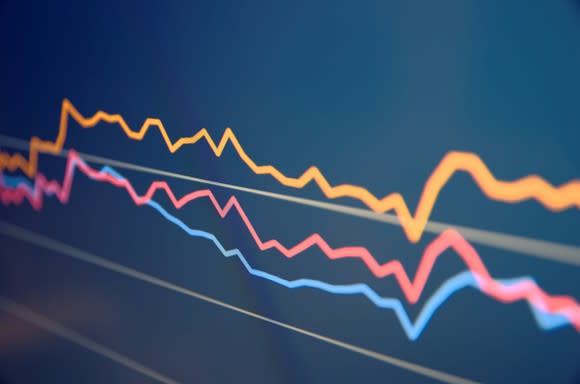Why Cboe Global Markets Stock Fell 17% in February
What happened
Shares of exchange holding company Cboe Global Markets, Inc. (NASDAQ: CBOE) fell 16.8% last month, according to data from S&P; Global Market Intelligence.
So what
Cboe was hit by two phenomena in the month of February: fourth-quarter 2017 earnings that slightly missed analyst's expectations and investors' misgivings over fervid trading in its proprietary VIX (Cboe Volatility Index) instruments.
The company reported adjusted earnings per share of $0.87. According to a Reuters analysis, however, investors were expecting $0.87 per share. Results actually were robust: Cboe has steadily expanded trading volumes and exhibited impressive revenue growth over the last few quarters. Even after stripping away revenue from the company's prior-year acquisition of exchange competitor Bats Global Marketplace, Cboe managed to post 8% organic top-line growth during the last three months.
This might have quelled investors' reactions, but during the week, Cboe reported earnings (the week of February 5th) and the market was in the throes of a spike in volatility that many blamed on over-trading of the very volatility instruments that Cboe has pioneered.
The company made a presentation on February 7th in order to reassure investors about the market's wild volatility and to emphasize that its own exposure to the volatility options and futures it offers to traders is relatively minor. During Cboe's earnings conference call, management asserted that the majority of VIX and related product trading is undertaken by institutional investors that are hedging against market volatility, rather than attempting to profit from it outright.
Now what

Image source: Getty Images.
Cboe enjoyed healthy trading volumes in the fourth quarter, which you can read about in a more detailed analysis I wrote last month. Of note, futures revenue rose 35% against the prior-year quarter on the back of a 21% rise in average daily trading volume. Investors will probably view next-quarter's results with more equanimity, unless market volatility surges again.
For now, Cboe's stock is slowly finding favor with investors again. Shares have recovered some ground and are down just 4% year to date, as of this writing.
More From The Motley Fool
Asit Sharma has no position in any of the stocks mentioned. The Motley Fool recommends Cboe Global Markets. The Motley Fool has a disclosure policy.

 Yahoo Finance
Yahoo Finance 